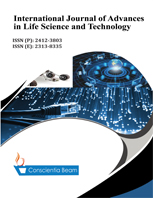Radiography Monitoring of Osteoconduction and Osteoinduction of Orthotopic Allograft Autoclaved Covered With Propolis
DOI:
https://doi.org/10.18488/journal.72/2014.1.1/72.1.25.31Abstract
The veterinarian orthopedic surgeon is often faced to the loss of bone substance in diaphyseal region of long bones. Our study is based on a biological approach to the filling of segmental bone loss by implanting an autoclaved orthotopic allograft of one centimeter length covered and uncovered with propolis in the femoral diaphysis under general anesthesia and sterile condition. The experiment involved eight adult dogs, from local breed and different sex; split into two groups. An autoclaved allograft without propolis was implanted for the first animals group (control group ) then the same graft has been implanted to the second animals group. The aim of our study is to determine the osteoinductive and osteoconductive allograft covered with propolis, to follow clinically and radiologically the incorporation of the autoclaved graft.The results showed that the use of a graft covered with propolis accelerated the osteoinductive and osteoconductive process, this is reflected by an early passage of the callus . The use of a thin layer of propolis on a autoclaved allograft, stimulated peripheral and spinal osteoinduction, and accelerated osseointegration at both proximal and distal interfaces, this phenomenon can be controlled depending on the amount used of propolis on the graft.

